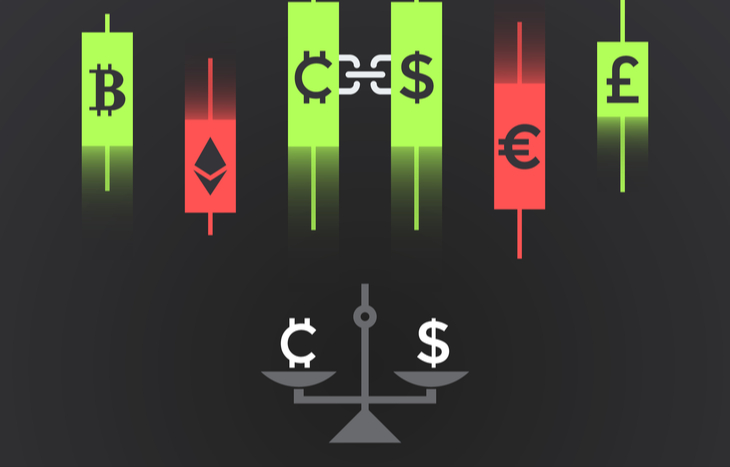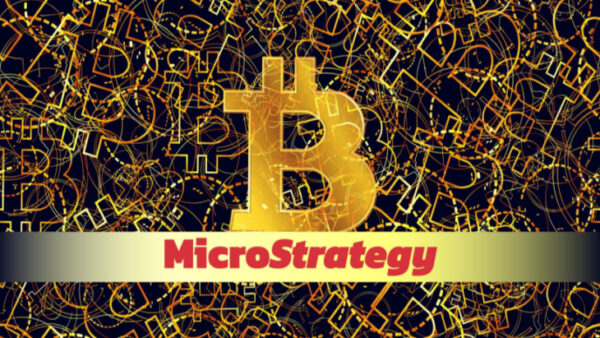A Stablecoins List for the Crypto-Curious Who Are Volatility-Averse
This stablecoins list won’t give investors access to the wild price swings that put crypto on the map. Stablecoins are conspicuously less volatile than most other cryptocurrencies. They accomplish this by pegging their value to a more stable asset.

For instance, some stablecoins are backed by a dollar reserve. These reserves are usually handled by an independent administrator. And the administrator is regularly audited to certify that the fixed ratio between the reserve and the coin (typically 1:1) is warranted. But this is just one of several examples of an asset that a stable coin can be pegged to.
There are commodity-collateralized stablecoins. These are backed by assets such as precious metals, oil or even real estate. There are also crypto-backed stable coins. And there is something called “seigniorage style” stablecoins. These are managed and backed by an algorithmic process as opposed to a hard asset. The algorithm naturally expands and contracts this sort of stablecoin’s supply. This process is modeled after the way central banks manage monetary supplies. And it naturally keeps the value very… well, stable.
This isn’t an exhaustive stablecoins list. There are several other types out there. But these are the main examples and the ones that we’ll be taking a closer look at going forward.
Stablecoins List: The Five Favorites in Our Wallets
- Tether (USDT)
- Paxos Standard (PAX)
- TrueUSD (TUSD)
- USD Coin (USDC)
- Binance USD (BUSD)
Tether
We’re starting off our stablecoins list with the largest stablecoin by market cap. Tether is a pretty standard blockchain-based cryptocurrency. When it first launched in 2014, Tether set out to back each token 1:1 with U.S. dollars. That’s no longer the case, though. It was revealed recently that most of the U.S. dollars Tether was backed by actually consisted of “commercial paper.” This caused quite a stir in the crypto community. You can read the details here. While it’s worth noting that this is a riskier asset than Treasury bills, The revelation really didn’t impact Tether’s value.
As a store of value, Tether is extremely reliable. But what’s most interesting is how quickly Tether’s usage has surged. This stablecoin surpassed the $1 trillion mark or the first time in terms of adjusted on-chain volume on a yearly basis back in May. It makes up more than half of the overall transaction volume of stablecoins. And adoption is still rising. That makes this one of the most promising cryptos on our stablecoins list.
Paxos Standard
With a market cap just below $1 billion, Paxos is tiny compared to Tether. But this rival stablecoin is making strides towards growth. It’s an extremely well-regulated stablecoin. And it’s one of the few that have been approved by the New York State Department of Financial Services. This helped pave the way to a major partnership with PayPal (Nasdaq: PYPL). The approval played a major role in allowing it to get into the crypto business. And having a friend in the form of this payments systems giant will be very helpful in introducing increased adoption. That makes this one of the more promising tokens on our stablecoins list.
TrueUSD
This extremely reliable stablecoin is about on par with Paxos in terms of market cap. This one is 100% backed by the U.S. dollar. And it also happens to be one of the most liquid stablecoins available to date. TrueUSD is a product of the TrustToken team, which has developed an excellent reputation for developing asset-backed tokens.
It’s also worth noting that TrustToken has developed partnerships with banks to store the funds backing this stablecoin. But the most obvious reason to like TrueUSD is that is has lower transaction fees than wire transfers. And on top of that, it offers above-average interest rates on stored balances. All these factors make this a no-brainer for our best stablecoins list.
USD Coin
In terms of market cap, USD Coin is the second-largest stablecoin. It was developed by the Centre Consortium, which is a collaboration between Circle and Coinbase (Nasdaq: COIN). This Ethereum-based stablecoin is also pegged to the U.S. dollar at a 1:1 ratio. And it’s available in just about every crypto exchange out there. (If you happen to be in search of an exchange, you can check out a side-by-side comparison of two of our favorites here.)
Because it operates on the Ethereum network, USD Coin can be transferred around in the world in virtually no time. This also makes it a very cost-efficient means of transferring funds. And just for peace of mind, U.S. dollar reserves are audited monthly by the giant accounting firm Grant Thornton. All of this makes this one of the stablest coins on our stablecoins list.
Binance USD
Not to be outdone by Coinbase, Binance developed a stablecoin of its own that’s also pegged 1:1 to the U.S. dollar. And it can also be used anywhere the ERC-20 Ethereum platform is accepted. This means that Binance USD can be used for many forms of commerce, and transactions can be completed in mere minutes. This stablecoin has also been approved by the New York State of Financial Services. Like Paxos Standard, there are no fees associated with creating and redeeming Binance USD. And needless to say, this is the go-to stablecoin for those who prefer to use the Binance exchange for their crypto transactions.
Why Invest in This List of Stablecoins?
For starters, the stablecoins on this list come with a hearty dose of transparency, as all transactions are recorded on a public ledger that can be monitored by anyone. The other reason these stablecoins make for a good investment is that transaction speeds blow traditional payment methods out of the water. Have you ever seen a change show up on your bank statement days after you made it? That doesn’t happen on blockchains. And stablecoin transactions don’t rely on third parties to verify transfers. This leads to lower fees.
For someone using crypto as a means of transferring their money (or buying other cryptos), this stablecoins list is simply ideal.
Why Stablecoins Might Not Be Right for You
One of the big reasons crypto has caught on is its decentralized nature. But the same can’t be said for the tokens on this stablecoin list. For the most part, they are created by centralized outfits that own the currency. While this keeps them much less volatile than traditional cryptocurrencies, it also means that they are less prone to grow in value. If you’re looking for the next moonshot, there are other coins, like Dromos or Telcoin, that might be of interest.
The Bottom Line on Stablecoins
The investment opportunities on our stablecoins list won’t be making anyone rich. But they do offer an additional way to diversify your crypto portfolio… while getting a nice dose of stability in the process. They can also offer a sort of safety net for those trading in some of the more volatile altcoins. If the value of a coin is rapidly declining one of the easiest ways to exit a position is by simply trading it for a stablecoin. It’s an easily accessed escape hatch that can be used to store value while deciding on your next trade.
If you’re not sure what your next crypto trade should be, we suggest signing up for Manward Financial Digest. Manward founder – and crypto expert – Andy Snyder offers all sorts of ways to put stablecoins to work while trading them in for some of the fastest-growing cryptocurrencies on the market. Just enter your email address in the box below and start preparing for your next crypto trade.
About Matthew Makowski
Matthew Makowski is a senior research analyst and writer at Investment U. He has been studying and writing about the markets for 20 years. Equally comfortable identifying value stocks as he is discounts in the crypto markets, Matthew began mining Bitcoin in 2011 and has since honed his focus on the cryptocurrency markets as a whole. He is a graduate of Rutgers University and lives in Colorado with his dogs Dorito and Pretzel.





